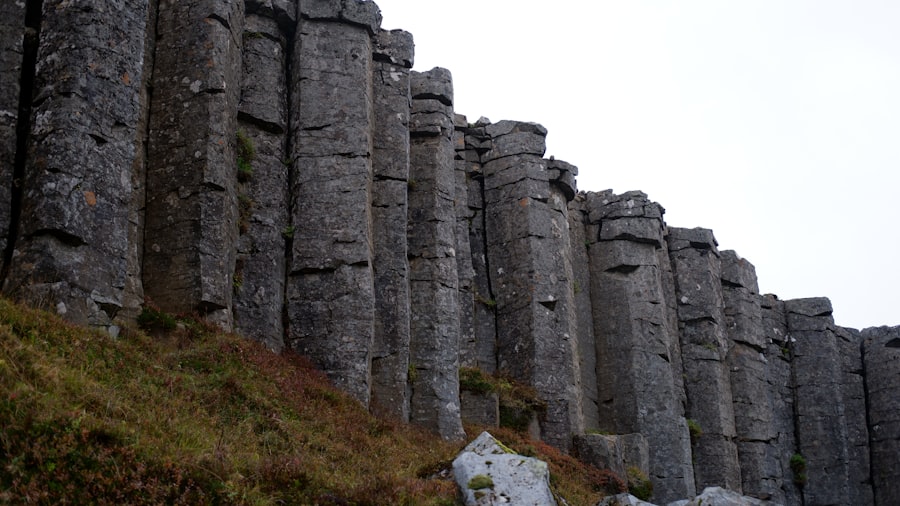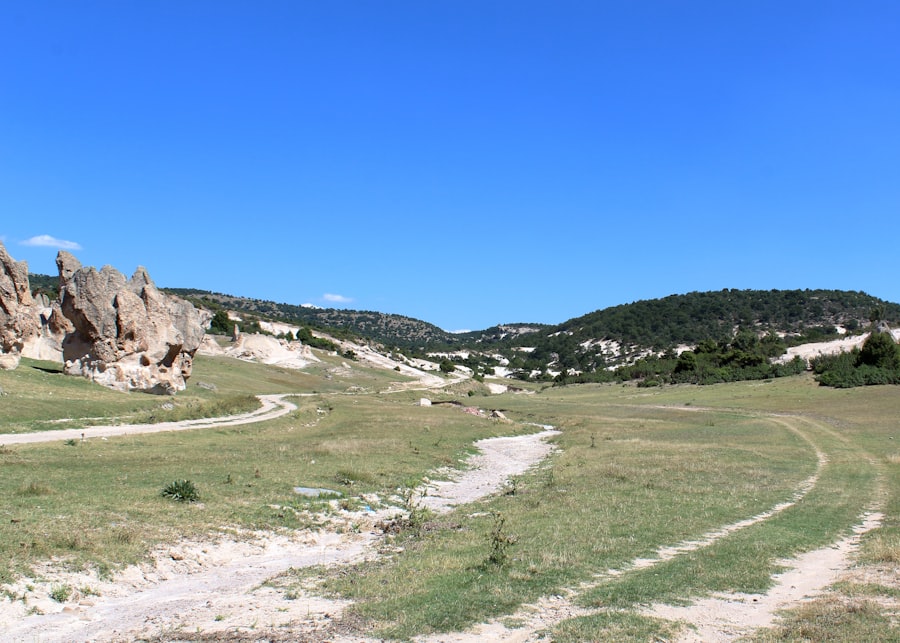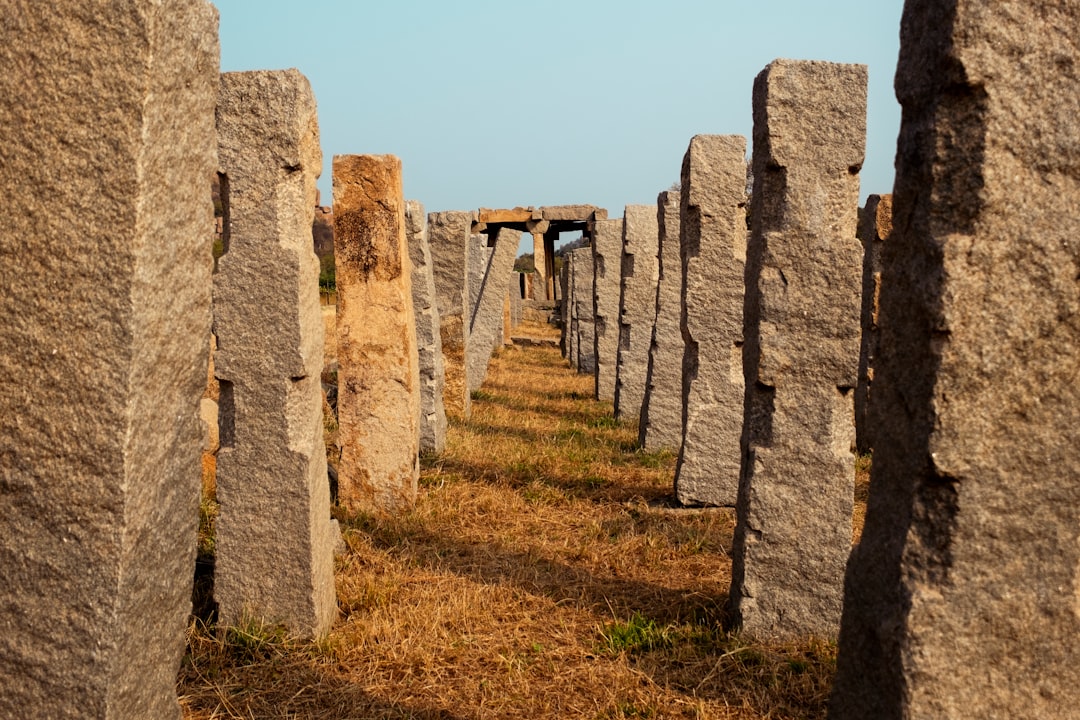The Megalithic Yard is a fascinating unit of measurement that has intrigued historians, archaeologists, and mathematicians alike. This ancient measurement system, believed to have been used by various prehistoric cultures, is approximately 2.72 feet or 0.829 meters long. It is thought to have been employed in the construction of megalithic structures, such as stone circles and burial mounds, which are scattered across Europe and beyond.
As you delve into the world of the Megalithic Yard, you will uncover a rich tapestry of human ingenuity and the quest for understanding the cosmos through geometry and architecture. The significance of the Megalithic Yard extends beyond mere measurement; it represents a connection between ancient civilizations and their environment. By examining how these cultures utilized this unit, you can gain insights into their social structures, religious beliefs, and astronomical knowledge.
The Megalithic Yard serves as a bridge between the past and present, inviting you to explore the ways in which ancient peoples interacted with their surroundings and how they sought to impose order on the chaos of nature.
Key Takeaways
- The Megalithic Yard is a proposed ancient unit of measurement believed to have been used in prehistoric construction.
- It was first identified through the study of megalithic sites and is thought to have mathematical and geometrical significance.
- Evidence of the Megalithic Yard appears in various cultures across Europe, Asia, and the Americas, suggesting a possible widespread ancient knowledge.
- Theories about its origin and use range from practical surveying tools to mystical or symbolic meanings, sparking ongoing debates.
- Despite controversies, the Megalithic Yard continues to influence modern research and applications in archaeology and metrology.
The Origins and Discovery of the Megalithic Yard
The origins of the Megalithic Yard are shrouded in mystery, with its first documented references emerging from the study of megalithic sites in Britain and Europe. Researchers like Alexander Thom, a Scottish engineer and archaeologist, played a pivotal role in bringing this measurement to light during the mid-20th century. Thom’s meticulous surveys of stone circles and other megalithic structures revealed a consistent pattern in their dimensions, leading him to propose the existence of a standardized unit of measurement that he termed the Megalithic Yard.
As you explore the historical context surrounding the discovery of the Megalithic Yard, you will find that it was not merely an isolated phenomenon. The concept of standardized measurements has been a fundamental aspect of human civilization since its inception. The Megalithic Yard represents an early attempt by prehistoric societies to create a coherent system for construction and land division, reflecting their advanced understanding of mathematics and geometry.
This discovery has opened up new avenues for research, prompting scholars to investigate how this unit may have influenced architectural practices across different cultures.
The Mathematical and Geometrical Significance of the Megalithic Yard

The mathematical implications of the Megalithic Yard are profound, as it embodies a sophisticated understanding of geometry that predates modern mathematical concepts. When you consider its dimensions, you will notice that the Megalithic Yard is closely related to various geometric shapes and ratios that have been foundational in mathematics. For instance, it can be linked to the ancient practice of using circles and squares in construction, which were essential for creating stable structures.
Moreover, the Megalithic Yard is often associated with astronomical alignments found in megalithic sites. Many researchers believe that ancient builders used this unit to align their structures with celestial events, such as solstices and equinoxes. This connection between measurement and astronomy highlights the advanced knowledge possessed by these early societies.
As you delve deeper into this topic, you will uncover how the Megalithic Yard served not only as a practical tool for construction but also as a means of connecting earthly structures with cosmic phenomena.
Megalithic Yard Measurements in Different Cultures and Civilizations
| Culture/Civilization | Approximate Megalithic Yard Length (cm) | Measurement Usage | Notable Sites | Comments |
|---|---|---|---|---|
| Neolithic Britain | 82.96 cm | Stone circle layouts, burial mounds | Stonehenge, Avebury | Proposed by Alexander Thom as a standard unit |
| Ancient Egypt | ~52.3 cm (Royal Cubit) | Temple and pyramid construction | Giza Pyramids, Karnak | Not a megalithic yard but a precise ancient unit |
| Ancient Malta | ~83 cm | Temple architecture | Ġgantija Temples, Tarxien Temples | Similar to British megalithic yard, suggesting cultural links |
| Prehistoric Ireland | ~82.5 cm | Passage tomb dimensions | Newgrange, Loughcrew Cairns | Measurements align closely with British megalithic yard |
| Andean Civilizations | ~66 cm (Inca “Tupu”) | Land division and architecture | Machu Picchu, Sacsayhuamán | Distinct from megalithic yard but important regional unit |
| Ancient Mesopotamia | ~50.4 cm (Cubit) | Building and land measurement | Ur, Babylon | Not related to megalithic yard but foundational unit |
The concept of the Megalithic Yard is not confined to a single culture; rather, it appears in various forms across different civilizations. As you explore these diverse applications, you will find that many ancient societies developed their own systems of measurement that share similarities with the Megalithic Yard. For example, in ancient Egypt, builders utilized units based on body measurements, such as the cubit, which also reflects an understanding of proportionality akin to that seen in megalithic structures.
In addition to Egypt, other cultures such as the Indus Valley civilization and Mesoamerican societies exhibited advanced architectural practices that suggest a shared knowledge of measurement systems. The presence of similar dimensions in their constructions raises intriguing questions about cultural exchange and communication among these civilizations. As you investigate further, you may ponder whether these societies independently developed their systems or if there was a more extensive network of knowledge that transcended geographical boundaries.
Megalithic Yard Evidence in Europe
Europe is home to some of the most significant evidence supporting the existence of the Megalithic Yard. From Stonehenge in England to the megalithic tombs of Ireland, you will discover numerous sites where this ancient measurement appears to have been employed.
As you examine these sites more closely, you will find that many megalithic structures exhibit consistent dimensions that align with the Megalithic Yard. For instance, stone circles often feature diameters that correspond to multiples of this unit, indicating a deliberate choice by ancient builders. This evidence not only reinforces the idea of a standardized measurement but also invites you to consider the cultural significance behind these constructions.
What did these structures mean to their creators? How did they reflect their beliefs about life, death, and the cosmos?
Megalithic Yard Evidence in Asia

While much attention has been focused on European megaliths, Asia also offers compelling evidence for the use of similar measurements. As you explore sites such as those found in India and Southeast Asia, you will encounter ancient structures that exhibit dimensions consistent with the Megalithic Yard. For example, certain temples in India display architectural features that suggest an understanding of proportionality akin to that seen in megalithic sites.
In addition to temples, burial mounds and stone circles found throughout Asia further support the notion that ancient cultures utilized standardized measurements for construction purposes. The presence of these structures raises questions about cultural diffusion and exchange between civilizations across vast distances. As you delve into this topic, consider how these ancient societies may have influenced one another through trade or migration, leading to shared architectural practices.
Megalithic Yard Evidence in the Americas
The Americas also present intriguing evidence for the existence of megalithic structures that may have employed measurements similar to the Megalithic Yard. As you explore sites such as those found in Peru or Mexico, you will discover impressive stone constructions that reflect advanced engineering skills. The precision with which these structures were built suggests a sophisticated understanding of measurement.
In particular, sites like Machu Picchu and Teotihuacan exhibit architectural features that align with principles associated with the Megalithic Yard. The alignment of certain buildings with celestial events further emphasizes the connection between measurement and astronomy found in megalithic cultures worldwide. As you investigate these sites, consider how they reflect not only technological prowess but also deep cultural beliefs about humanity’s place within the cosmos.
Theories and Speculations Surrounding the Megalithic Yard
The existence of the Megalithic Yard has sparked numerous theories and speculations among researchers seeking to understand its origins and significance. Some scholars propose that this unit was part of a broader system of measurement used by ancient peoples across different regions. Others suggest that it may have been developed independently by various cultures as they sought to impose order on their environments.
As you engage with these theories, you will find that they often intersect with broader discussions about human cognition and cultural development. The idea that early societies could arrive at similar solutions to measurement challenges raises questions about shared cognitive processes or universal principles guiding human thought.
Modern Applications and Relevance of the Megalithic Yard
In contemporary times, the Megalithic Yard continues to hold relevance for various fields beyond archaeology and history. As you explore its modern applications, you will find that architects and engineers sometimes draw inspiration from ancient measurement systems when designing new structures. The principles underlying the Megalithic Yard can inform contemporary practices by emphasizing proportionality and harmony in design.
Moreover, discussions surrounding sustainable architecture often reference ancient practices rooted in local materials and environmental considerations. By examining how prehistoric cultures utilized measurements like the Megalithic Yard, modern practitioners can glean valuable insights into creating buildings that resonate with their surroundings while minimizing ecological impact. This connection between past and present underscores the enduring legacy of ancient knowledge in shaping our built environment today.
Controversies and Debates Surrounding the Megalithic Yard
Despite its intriguing implications, the concept of the Megalithic Yard is not without controversy. Scholars continue to debate its validity as a standardized unit of measurement used by ancient cultures. Some argue that variations in dimensions across different sites suggest a lack of uniformity or intentionality in its application.
Others contend that regional differences may reflect adaptations to local conditions rather than a rejection of a common system. As you navigate these debates, consider how they reflect broader tensions within archaeological discourse regarding interpretation and evidence. The challenge lies not only in establishing definitive conclusions but also in recognizing the complexities inherent in studying ancient cultures whose practices may have varied widely over time and space.
Engaging with these controversies invites you to think critically about how we construct narratives around history based on available evidence.
The Implications of Global Megalithic Yard Evidence
The exploration of global evidence for the Megalithic Yard reveals profound implications for our understanding of human history and cultural development. As you reflect on this journey through time and space, consider how this ancient measurement system serves as a testament to humanity’s enduring quest for knowledge and order amidst an ever-changing world. The connections forged between diverse civilizations through shared practices highlight our common heritage while celebrating individual expressions shaped by unique environments.
Ultimately, engaging with concepts like the Megalithic Yard encourages us to appreciate not only what we have inherited from our ancestors but also how those legacies continue to inform our present-day lives. By recognizing patterns across cultures—whether through architecture or mathematics—we can cultivate a deeper appreciation for both diversity and interconnectedness within human experience throughout history.
Recent studies have shed light on the concept of the megalithic yard, a unit of measurement believed to have been used by ancient civilizations in the construction of megalithic structures. For a deeper understanding of this fascinating topic and its global implications, you can explore the article available at this link. This resource provides valuable insights into the evidence supporting the existence of the megalithic yard across various cultures and regions.
WATCH THIS! The Ancient Blueprint That NASA Buried
FAQs
What is the megalithic yard?
The megalithic yard is a proposed ancient unit of measurement, approximately 0.83 meters (about 2.72 feet) in length, believed to have been used in the construction of megalithic monuments during the Neolithic period.
Who first proposed the concept of the megalithic yard?
The concept of the megalithic yard was first proposed by Alexander Thom, a Scottish engineer and archaeoastronomer, in the mid-20th century after his extensive surveys of megalithic sites in Britain.
Is there global evidence supporting the existence of the megalithic yard?
While the megalithic yard was initially identified in British megalithic sites, some researchers have suggested that similar units of measurement appear in megalithic structures across Europe and other parts of the world, though this remains a subject of debate among archaeologists.
How was the megalithic yard measured or identified?
Alexander Thom analyzed the dimensions and spacing of stones in various megalithic sites, using statistical methods to identify a consistent unit of measurement, which he termed the megalithic yard.
Is the megalithic yard universally accepted by archaeologists?
No, the existence and use of the megalithic yard remain controversial. Some archaeologists support Thom’s findings, while others argue that the evidence is inconclusive or that the measurements could be coincidental.
What significance does the megalithic yard have in understanding ancient cultures?
If the megalithic yard was indeed used, it suggests that Neolithic societies had a standardized system of measurement, indicating advanced knowledge in engineering, planning, and possibly communication across regions.
Are there modern units of measurement related to the megalithic yard?
The megalithic yard is roughly equivalent to 0.83 meters, but it does not directly correspond to any modern standard unit. It is considered a prehistoric unit specific to certain ancient cultures.
Where can one find megalithic sites that might have used the megalithic yard?
Megalithic sites in the British Isles, such as Stonehenge and other stone circles, are primary locations where the megalithic yard has been proposed to have been used. Similar structures in parts of Europe have also been studied for evidence of this unit.
What methods are used to study the megalithic yard today?
Modern researchers use archaeological surveying, statistical analysis, and sometimes digital modeling to examine the dimensions of megalithic structures and assess the likelihood of standardized units like the megalithic yard.
Can the megalithic yard be linked to other ancient measurement systems?
Some scholars have attempted to link the megalithic yard to other ancient units of measurement, suggesting possible cultural exchanges or common origins, but definitive connections have not been established.
